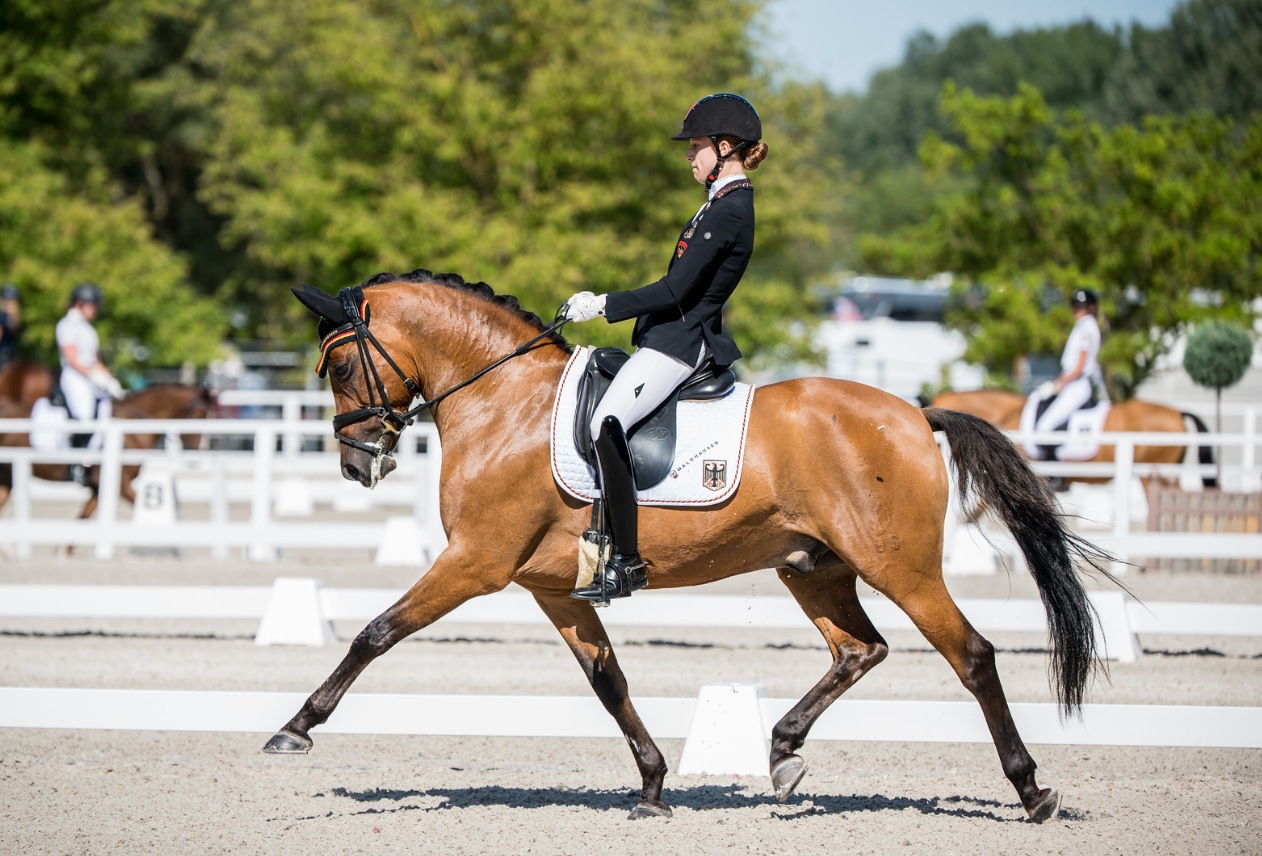Menu

Olivia Towers gets some top tips from Dressage judge Isobel Wessels on the mistakes that could be costing you a big score! This week, we packed FEI ambassador Olivia Towers off to catch up with international Dressage judge Isobel Wessels. Together they address ‘test rustiness’ – the common mistakes riders can make when they haven’t been in the area for a while.

In this first of our two-part series, we got some grat advice on all things test-riding and the three areas she believes can make or break a Dressage test; the centre line, the walk and correctly linking movements together.
Here’s the video, and you can read on for more great information from Isobel…
Whether at the beginning or end of your test, the centre line is your chance make an impact on the judge. It’s a movement built off accuracy – riding up the ¾ line and hoping a winning smile will mask your drift simply isn’t going to cut it. So, how do we improve upon accuracy?
When entering at A, Isobel advises to allow yourself plenty of room before making the turn to enter the arena. This is particularly useful for young horses as if they’re prone to getting unbalanced and wobbly, they should be able to right themselves before officially starting their test.
Another top tip is to always look above and beyond the C marker. Not only does this improve your posture as a rider but concentrating on the horizon allows for you to ride a straighter, more positive line. Riders who stare at their horse’s poll often lose their way and complain their C marker comes up quickly.
At some point during your test you’ll be required to halt on the centreline. Often this is at the end of your display, but sometimes it can be a requirement at the beginning. Your judge will look for three main things here; the accuracy of the halt, how submissive your horse is to the transition and how direct the transition is.
In order to obtain the higher marks, the transitions need to be responsive and the halt as square as possible. Think about actioning your halt so that your body as the rider is positioned over X. The judge at C and B/E should only be able to see two legs, not four, and the horse should be stood completely still.

The walk appears in various forms throughout all levels of Dressage. Between novice and medium levels, you’re likely to see three main variations of the pace outside Medium Walk.
The Free Walk is a test of obedience and acceptance. It involves the rider relinquishing the contact and letting the horse stretch to work over his back.
In an ideal world, the horse should take the contact forward and cover the ground purposefully in a clear, four-beat rhythm. There should be an obvious over track and you should think of it very much as a working gait.
Isobel notes it is a test for any horse, particularly those with a big walk. In theory, the more rein the rider gives away the more likely it will be that the horse can maintain a rhythm. However, it’s often easier said than done and you should ride the movement however you feel is best for your horse at its stage of training.

Extended Walk is similar to the Free Walk in that the horse is in a more relaxed frame than its typical way of going, however unlike Free Walk, they should still be connected onto the bridle.
The horse should be on the aids and covering more ground with maximum over-track while working through his whole frame. Think of it as an exaggeration of the gait; a display of the absolute most your horse can track up and stride out while remaining uphill and connected.
This walk maintains a clear four-beat rhythm however, unlike the variations listed above, there is no over-track. This pace is all about carriage and activity; he should be able to hold himself in the frame and not rely on your hands for support.
The hind leg should come underneath the horse and look to work in more of a ‘piston’ action as the back end takes on more power.
As well as having opportunity to obtain points per movement, riders can secure collective marks for their Dressage display.
Whatever level you ride at, you should always aim to enter the arena and pull off a test that is forward and in a clear rhythm. If your horse is balanced and supple then in theory, he should be able to go from one movement to the next in a way that isn’t viewed as disjointed or jerky.
Isobel notes that at the end of the day it is the overall way of going that is looked at by the judge. They take into consideration things such as harmony between horse and rider, ease in which a pairing move from one movement to the next, the lightness of the contact and the use of small aids. Often when riding through tests at home, riders can get bogged down practicing two or three specific movements and forget to rehearse the flow of the whole display.
When a rider is able to come into an arena and show the movements in a seamless way, the judge can better appreciate the horse’s way of going and has the opportunity to award the higher marks.
“The test should feel nice and should be nice to judge. Judges are trying their best to give good marks, so if you can oblige us and do a lovely test then we’re happy…”